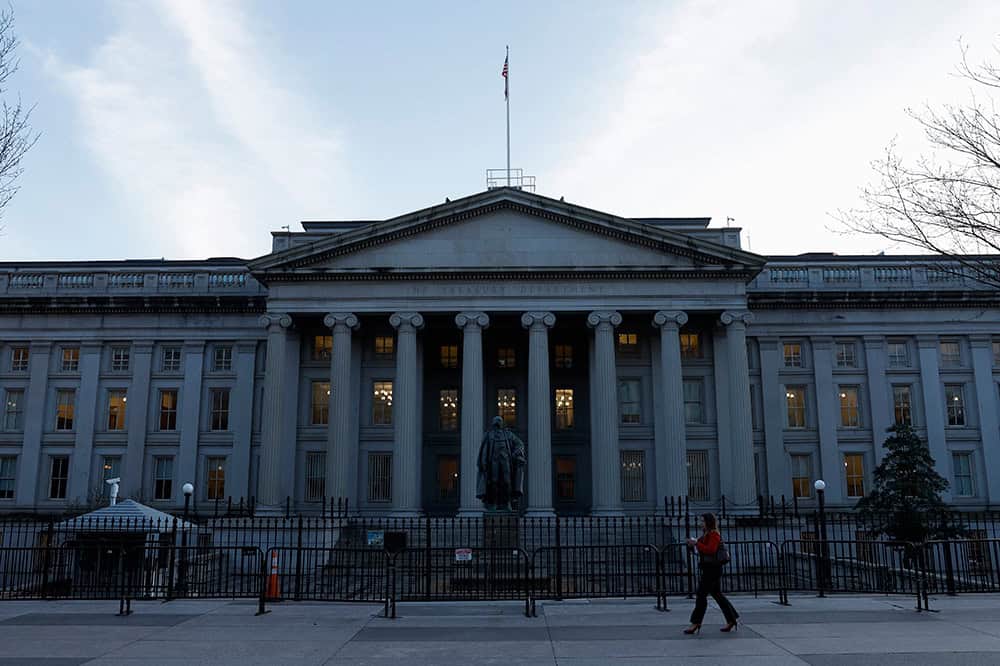The Macroeconomic Gains from Stabilizing and Reducing Federal Debt
Last Updated August 31, 2017
A new report, prepared by Macroeconomic Advisers for the Peter G. Peterson Foundation, finds that while our national debt is on a dangerously unsustainable path, gradual fiscal restraint can be paired with monetary accommodation to achieve significant macroeconomic benefits.
The analysis demonstrates clearly that there are pathways to solving our long-term fiscal challenges without jeopardizing economic growth. By making gradual changes to federal spending and revenue, lawmakers can not only stabilize our fiscal outlook, but provide long-run economic benefits for American families (in terms of real GNP growth) without inflicting undue damage on the U.S. economy in the near term.
Top-level findings include:
- Under current, unsustainable fiscal policies, U.S. federal deficits and debt will increase dramatically by 2045, putting upward pressure on interest rates and undermining our standard of living by “crowding out” private investments.
- These outcomes can be prevented by a gradual fiscal restraint that maintains, or even reduces, federal debt relative to the size of the economy.
- If such fiscal restraint is gradual enough, there is sufficient “monetary space” for the Federal Reserve, by lowering interest rates, to keep the economy close to full employment, growing at “trend,” with inflation close to the Fed’s 2% objective.
- The macroeconomic benefits of this mix of fiscal and monetary policy are substantial.
- If the ratio of debt to GDP were maintained at its current level, real per capita GNP would grow, on average, about 0.2 percentage points — or about 10% — faster per year through 2045.
- By 2045, the level of real per capita GNP would be 5.4% higher or, for a family of 4, slightly more than $18,000 per year at 2017 prices.
- The analysis suggests that the cumulative amount of any fiscal restraint is what matters; the mix of restraint between spending cuts and revenue increases is of minor importance.
- Another key finding of the analysis is that on our current fiscal path, U.S. trade deficits and our indebtedness to foreigners necessarily will rise along with federal deficits and debt, implying a gradual transfer of wealth and income to the rest of the world. However, if we apply gradual fiscal restraint,
the trade deficit will be 3.3% of GDP in 2045 compared to 4.4% of GDP in baseline. This represents a decrease of 25%.
About Macroeconomic Advisers
Macroeconomic Advisers is a leading independent research firm focused on the U.S. economic outlook and macroeconomic policy. The firm combines rigorous analytical methods with an unmatched understanding of how monetary and fiscal policies are conducted, offering unbiased and thoughtful analysis of where the U.S. economy is headed, and why. To learn more, please visit www.macroadvisers.com.
About the Peter G. Peterson Foundation
The Peter G. Peterson Foundation is a nonprofit, nonpartisan organization that is dedicated to increasing public awareness of the nature and urgency of key fiscal challenges threatening America's future, and to accelerating action on them. To address these challenges successfully, we work to bring Americans together to find and implement sensible, long-term solutions that transcend age, party lines and ideological divides in order to achieve real results. To learn more, please visit www.pgpf.org.
Further Reading
76 Options for Reducing the Deficit
The nonpartisan Congressional Budget Office released 76 policy options — spanning both revenues and spending — that could help bring the country’s rising debt under control.
News from the Quarterly Treasury Refunding Statement
As borrowing has risen, the Treasury has generally been increasing the proportion of bills (maturity of one year or less) in its portfolio of marketable securities.
The Fed Reduced the Short-Term Rate Again, but Interest Costs Remain High
High interest rates on U.S. Treasury securities increase the federal government’s borrowing costs.


